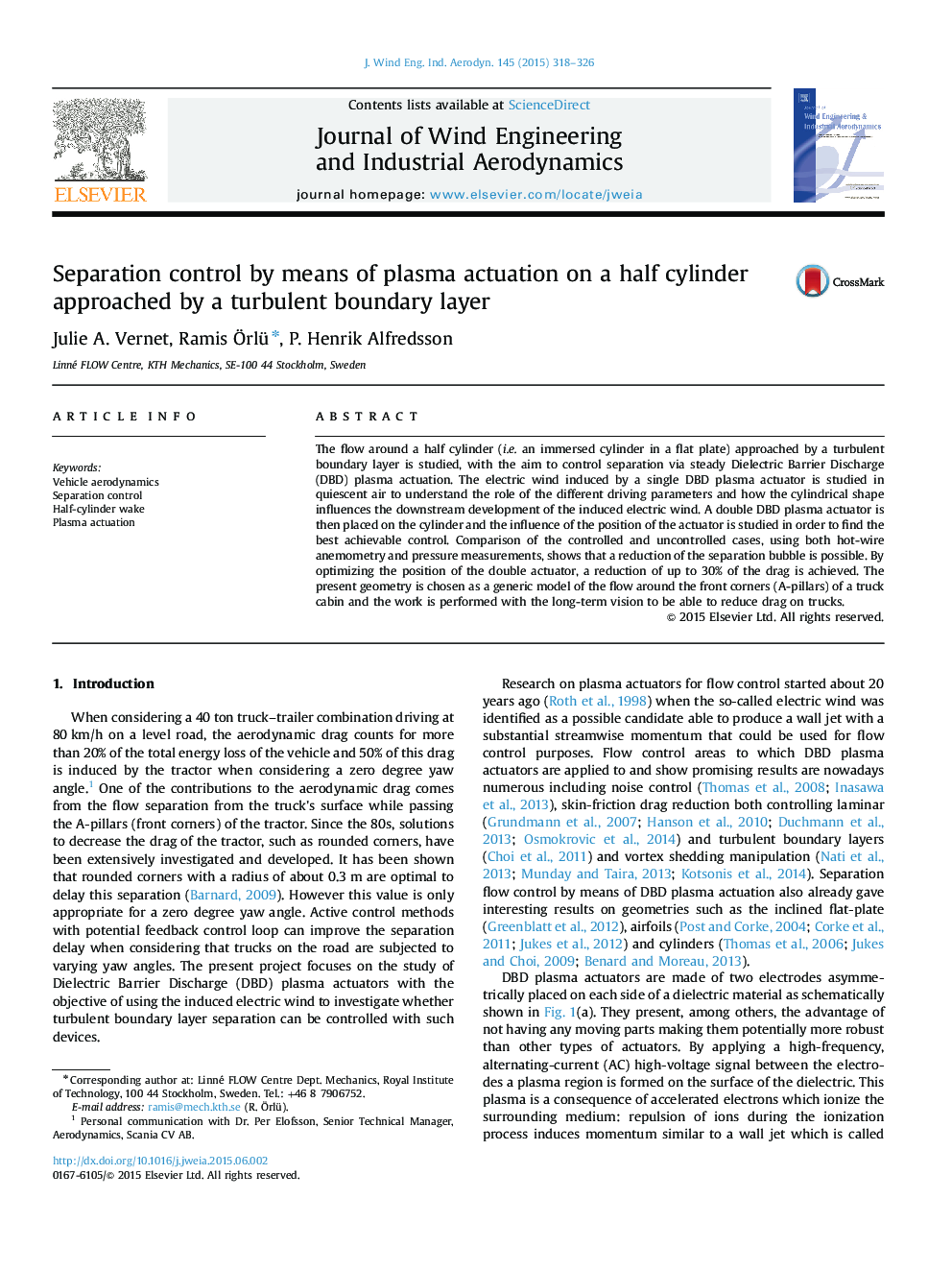| Article ID | Journal | Published Year | Pages | File Type |
|---|---|---|---|---|
| 293235 | Journal of Wind Engineering and Industrial Aerodynamics | 2015 | 9 Pages |
The flow around a half cylinder (i.e. an immersed cylinder in a flat plate) approached by a turbulent boundary layer is studied, with the aim to control separation via steady Dielectric Barrier Discharge (DBD) plasma actuation. The electric wind induced by a single DBD plasma actuator is studied in quiescent air to understand the role of the different driving parameters and how the cylindrical shape influences the downstream development of the induced electric wind. A double DBD plasma actuator is then placed on the cylinder and the influence of the position of the actuator is studied in order to find the best achievable control. Comparison of the controlled and uncontrolled cases, using both hot-wire anemometry and pressure measurements, shows that a reduction of the separation bubble is possible. By optimizing the position of the double actuator, a reduction of up to 30% of the drag is achieved. The present geometry is chosen as a generic model of the flow around the front corners (A-pillars) of a truck cabin and the work is performed with the long-term vision to be able to reduce drag on trucks.
